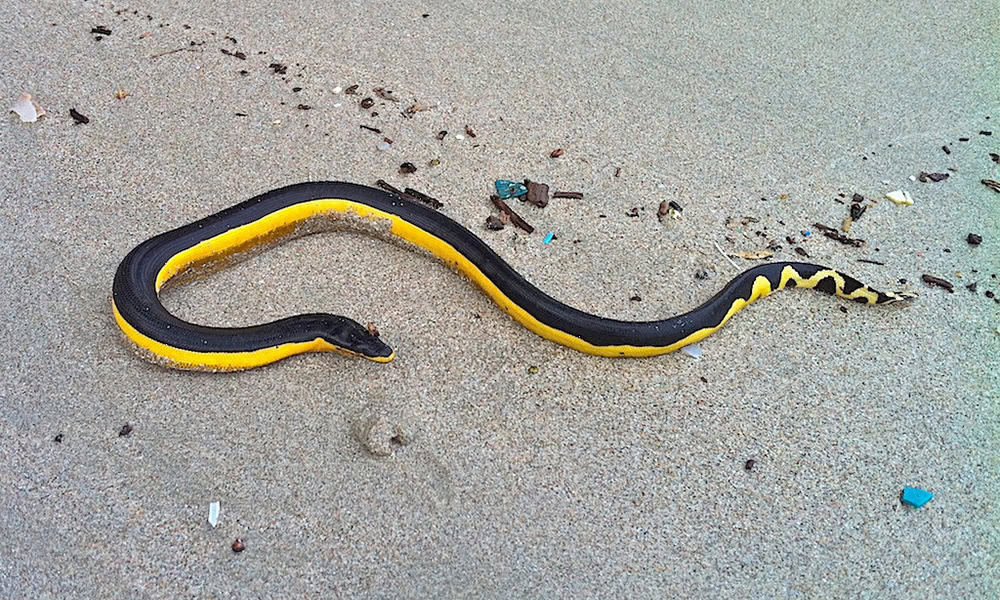Costa Rica is home to one species of sea snake, the yellow-bellied sea snake. These snakes are highly venomous, pelagic, and ovoviviparous. Let’s get into the details. The yellow-bellied sea snake (Pelamis platurus) is known as the serpiente marina, serpiente marina amarilla, or serpiente del mar in Spanish. These pretty snakes are brown/black on top and bright yellow below with the tail having brown and yellow spots or stripes. There’s also a newly recognized subspecies in the Golfo Dulce that is entirely yellow.
Yellow-bellied sea snakes are pelagic, which means they spend their lives in the sea often far from land, drifting on ocean currents. Their whole lifecycle takes place at sea. They eat, drink, mate, and give birth in the ocean. They hunt by floating on top of the water and quickly striking at any small fish that swim by. Their highly potent venom quickly subdues their prey.
For a long time it was thought that these snakes drank sea water and filtered it with a gland that removed the salt, but it has been discovered that they only drink fresh water. They rely on a layer of fresh water that sits on top of the sea water after a hard rain. They are able to go months without a drink between significant rainfalls.
Yellow-bellied sea snakes’ mate while floating near the water’s surface. After a gestation period of around six months, the female gives birth to five or six live young. Their reproduction method is termed ovoviviparity. Ovoviviparous species possess embryos that develop inside eggs that remain inside the female’s body until they’re ready to hatch.
As one might expect from a species that spends the entirety of its life in the water, yellow-bellied sea snakes have many physical adaptations to fit their aquatic environment. Their bodies are laterally compressed. Instead of being more cylindrical, they’re flatter on the sides, allowing them to move through the water more easily.
This shape is accentuated with the compressed, oar-like tail. They also have valved nostrils, set up high on the snout to aid in breathing from below the water and a supplemental form of respiration called cutaneous respiration that allows them to breathe through their skin.
Living on the Pacific coast of Costa Rica, I’ve come across this species several times. I’ve seen them lazily swim by while out on fishing boats and I’ve also come across them washed up on the shore as a result of storms. I’ve always been told that though they are technically very venomous they don’t bite people and are nothing to be afraid of.
After doing some more research for this article, it appears as though they do pose some level of risk to people. Apparently, most snake-bite victims are fisherman who are bitten while attempting to remove them from their nets. Although there are many anecdotal reports of yellow-bellied sea snake bites in Costa Rica, the only confirmed case I could find was a kid who was bitten at Playas del Coco. He went to the clinic with some pain but in the end was fine.
So, there you have it, Costa Rica’s only sea snake is perfectly designed for its watery lifestyle and quite beautiful to behold and while it probably doesn’t pose much of a threat, let’s just agree to appreciate them from a safe distance.
About the Author
Vincent Losasso, founder of Guanacaste Wildlife Monitoring, is a biologist who works with camera traps throughout Costa Rica. Learn more about his projects on facebook or instagram. You can also email him at: vincent@guanacastewildlifemonitoring.com

